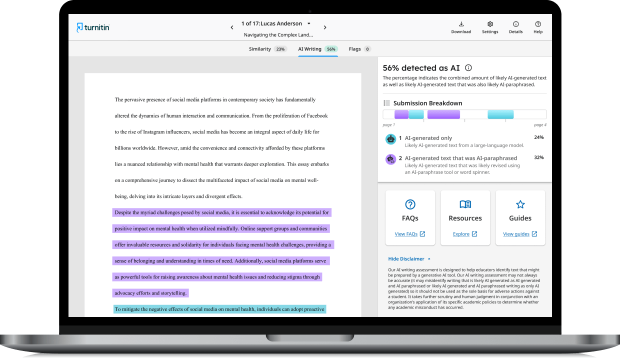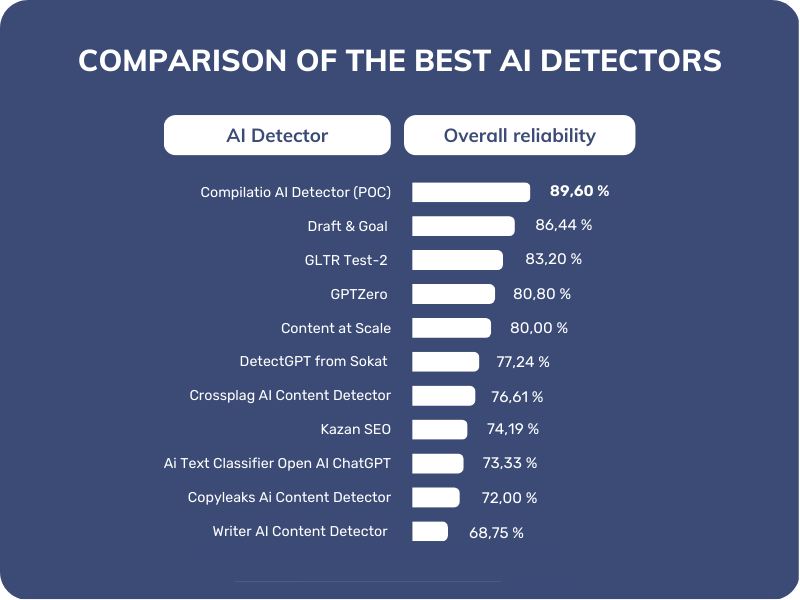Recognizing the Value of an Ai Detector in Today's Digital Landscape
As man-made intelligence continues to penetrate different elements of material development, identifying in between machine-generated and human-generated product has actually ended up being significantly complicated. These instruments not just help in recognizing AI-produced content but likewise copyright the integrity of details dissemination.
The Increase of AI Material

The surge of AI-generated web content has substantial effects for various industries, including home entertainment, journalism, and advertising - ai detector. Organizations are progressively using these innovations to enhance performance, customize content, and involve target markets better. The ability to assess huge datasets enables AI systems to customize material to meet particular user choices, giving a much more individualized experience
Nevertheless, the spreading of AI web content likewise elevates important factors to consider for material makers and consumers alike. As AI comes to be a lot more incorporated into web content production operations, recognizing the subtleties of AI-generated product is crucial for preserving quality and importance in a swiftly advancing electronic setting. Accepting this technological advancement while remaining vigilant regarding its ramifications is critical for stakeholders in the digital media landscape.
Obstacles of Authenticity
The appearance of AI-generated web content has introduced substantial challenges relating to credibility in electronic media. As algorithms end up being more sophisticated, comparing human-created and machine-generated web content becomes significantly difficult. This blurring of lines increases issues regarding the reputation of info and the possibility for misinformation to multiply.
Among the main difficulties is the erosion of trust amongst customers. With AI efficient in generating sensible text, images, and videos, individuals may discover it challenging to discern authentic sources from deceptive ones. This hesitation can result in a more comprehensive skepticism of all digital material, complicating initiatives to identify trusted information.
Additionally, the ramifications for copyright are significant. As AI devices create content based on existing works, concerns pertaining to possession and originality emerge. Material makers might have a hard time to protect their work from anonymous AI reproductions, weakening their livelihoods and civil liberties.
Last but not least, the capacity for harmful uses AI-generated content, such as deepfakes and automatic publicity, poses serious honest and social dangers. These challenges underscore the immediate demand for frameworks that maintain credibility in the electronic landscape, making certain that details remains reliable and trustworthy.
Duty of AI Detectors
Attending to the difficulties of credibility in electronic media requires innovative services, and AI detectors have actually become an important device in this initiative. These innovations are developed to evaluate and determine content created by expert system, consequently facilitating the discernment between human-created and machine-generated products. The duty of AI detectors prolongs beyond plain identification; they additionally add to preserving the integrity of details eaten by the public.
AI detectors utilize advanced algorithms to look at different aspects of electronic web content, consisting of etymological patterns, structural anomalies, and details pens that suggest automation. Their application spans multiple markets, including journalism, education and learning, and social media, where the visibility of AI-generated content can cause false information and erosion of depend on.

Advantages of Using AI Detectors
Guaranteeing authenticity in digital content personifies the fundamental demand for rely on info resources, and AI detectors serve as an effective ally in this pursuit. By determining AI-generated content, these devices help preserve the honesty of details, consequently securing users from false information and boosting overall content quality.
One of the primary benefits of using AI detectors is their capability to simplify Our site material confirmation procedures, significantly minimizing the moment and effort called for to assess the authenticity of digital products. This effectiveness enables material developers, educators, and businesses to focus on generating high-grade and reputable details, as opposed to spending extreme sources on fact-checking.
In addition, AI detectors foster responsibility amongst material developers. The knowledge that AI-generated material can be determined encourages transparency and honest methods in material production. This, subsequently, adds to a much more enlightened digital area, as users can with confidence engage with confirmed information.
Future of Content Verification
As the landscape of electronic content remains to develop, the future of web content verification offers both challenges and chances for keeping credibility. As AI innovations development, so as well do the approaches for producing and sharing misinformation (ai detector). This arms race in between material developers and confirmation tools demands the growth of much more advanced AI detectors with the ability of critical authentic material from controlled or produced material

Additionally, the rise of decentralized innovations, such as blockchain, holds assurance for confirming material provenance, guaranteeing that customers can map the origins of the details they eat. Ultimately, the future of material confirmation will certainly rest on our capacity to introduce when faced with progressing hazards, cultivating a digital setting where credibility is recognized and upheld as an essential principle.
Conclusion
In verdict, the proliferation of AI-generated content necessitates durable mechanisms for credibility verification. The future of web content verification pivots on the performance of AI detectors in preserving integrity across various media systems.
AI material production tools, such as all-natural language handling designs and generative adversarial networks, make it possible for people and organizations to generate high-grade material at unmatched speeds and reduced prices.
However, the expansion of AI material likewise increases crucial considerations for material makers and customers alike. As the class of AI-generated material continues to advance, the function of AI detectors becomes progressively crucial in securing authenticity and advertising openness in digital interaction. The knowledge that AI-generated content can be identified urges transparency and moral techniques in material production.As the landscape of electronic content continues to evolve, the future of content verification offers both tests and chances for keeping authenticity.